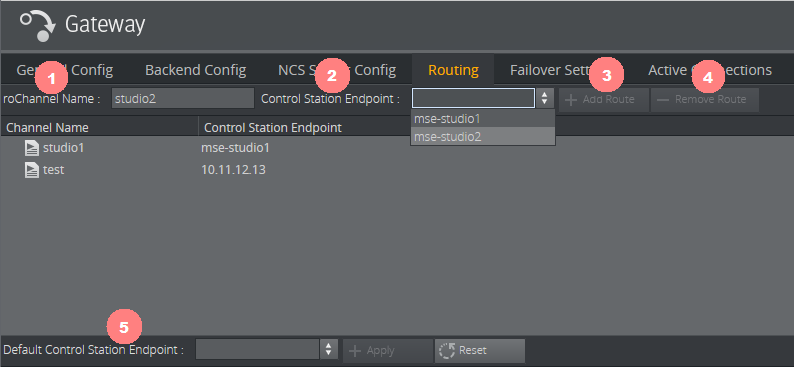The Routing configuration enables the user to manually configure Gateway to route messages to a specific control station. Whenever routing entries are added or removed, the Gateway server must be restarted for the settings to take effect.
For routing to have an effect, Enable AutoActivation must be enabled as part of the NCS Server Configuration (Advanced Settings).
Gateway does a lookup in the mapping table to match the running order channel (roChannel) used by the newsroom system. If the channel name is found, it uses either the MSE ID or TCP IP address to forward the message and subsequent messages from the newsroom system to the control station.
Routing
roChannel name: The roChannel name that identifies the control station. The roChannel name is set on the NCS server, often through an NCS client.
Control Station Endpoint: Control station endpoint to use for the new roChannel routing.
Currently connected control stations are shown in the dropdown list, but an MSE ID or a TCP IP could also be typed manually for control clients not yet connected.
Add Route: Fill in the text fields, and click the Add Route button to add a new route.
Remove Route: Select a route from the list, and click the Remove Route button to remove the route.
Default Control Station Endpoint: If no routing is specified for a roChannel, and the default control station endpoint is configured, messages with the roChannel will be routed to the default endpoint.
Currently connected control stations are shown in the dropdown list, but an MSE ID or a TCP IP could also be typed manually for control clients not yet connected.
Note: All changes to the Routing table require that the Gateway is restarted.
